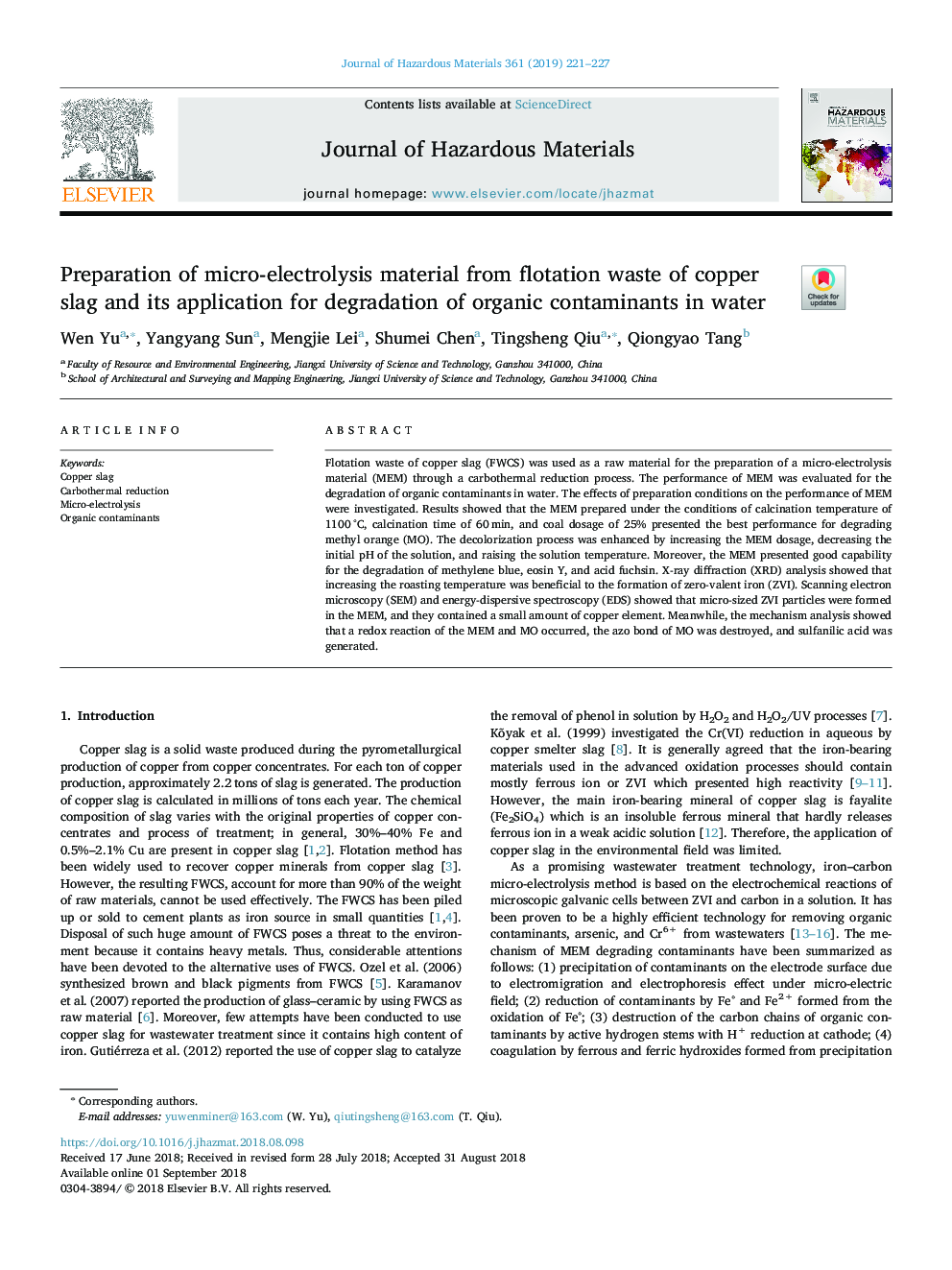| Article ID | Journal | Published Year | Pages | File Type |
|---|---|---|---|---|
| 10139678 | Journal of Hazardous Materials | 2019 | 7 Pages |
Abstract
Flotation waste of copper slag (FWCS) was used as a raw material for the preparation of a micro-electrolysis material (MEM) through a carbothermal reduction process. The performance of MEM was evaluated for the degradation of organic contaminants in water. The effects of preparation conditions on the performance of MEM were investigated. Results showed that the MEM prepared under the conditions of calcination temperature of 1100â°C, calcination time of 60âmin, and coal dosage of 25% presented the best performance for degrading methyl orange (MO). The decolorization process was enhanced by increasing the MEM dosage, decreasing the initial pH of the solution, and raising the solution temperature. Moreover, the MEM presented good capability for the degradation of methylene blue, eosin Y, and acid fuchsin. X-ray diffraction (XRD) analysis showed that increasing the roasting temperature was beneficial to the formation of zero-valent iron (ZVI). Scanning electron microscopy (SEM) and energy-dispersive spectroscopy (EDS) showed that micro-sized ZVI particles were formed in the MEM, and they contained a small amount of copper element. Meanwhile, the mechanism analysis showed that a redox reaction of the MEM and MO occurred, the azo bond of MO was destroyed, and sulfanilic acid was generated.
Related Topics
Physical Sciences and Engineering
Chemical Engineering
Chemical Health and Safety
Authors
Wen Yu, Yangyang Sun, Mengjie Lei, Shumei Chen, Tingsheng Qiu, Qiongyao Tang,
